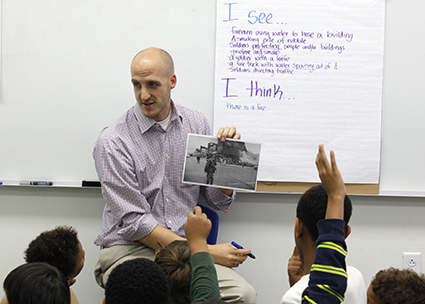The charter school movement began 25 years ago this summer, when Minnesota passed the first charter school law. At the time, the hope was that the charter sector would serve as an educational laboratory, where new approaches would be tried and successful ones copied. In 2014, President Obama echoed this point, arguing that successful charter schools “can provide effective approaches for the broader education system.”
Has this actually happened? Even after a quarter century, there is no simple answer.
Despite a wide range of viewpoints expressed in the popular press, research on how charter schools affect student learning tells a consistent story. The average charter school is no better or worse than the average traditional public school, but these averages hide much variation in individual schools. And the charter schools that are best at boosting student achievement are urban charters serving low-income students.
Success Where It’s Needed Most
In a study for the U.S. Department of Education, for example, we used admissions lotteries to study 33 charter schools in 13 states and found that the urban charters and those serving low-income students had positive effects on math and reading scores, but the other charters (suburban and rural schools serving higher-income students) actually had negative effects. Another lottery study found a similar pattern among Massachusetts charter schools, whereas a non-experimental study of charters in 41 urban areas also found positive effects.
Other research has found positive effects on student learning among a growing group of charter school networks that specialize in serving low-income students, mostly in urban areas. KIPP is the largest such network, and we have conducted two large-scale studies (released in 2013 and in 2015) that demonstrated positive impacts.
This is good news. Although charter schools are not universally effective in boosting student achievement, they appear to be most successful where they are needed most. Charter schools’ success in educating low-income urban students is particularly noteworthy given that education policymakers have long struggled to address inequality in educational outcomes—large and persistent achievement gaps for low-income students and students of color. Policies such as school finance reform, compensatory education, school desegregation, and teacher equity efforts have tried without success to substantially reduce these gaps.
Potential Broader Impact
Could the policies of successful urban charters, if used more broadly, succeed in closing these gaps? Charter school supporters would say yes.
Although not all urban charters are alike, many such schools have adopted a similar set of policies. As described in this working paper, many successful urban charters have long school days and years, foster a culture of high expectations, and place strong emphasis on consistently enforcing a well-defined set of rules for behavior. In addition, many use frequent feedback and coaching for teachers, extensive tutoring for struggling students, and data-driven instruction. If the charter school sector expands or traditional public schools adopt these policies, supporters argue that all urban schools would improve.
Critics of charter schools give us plenty of reasons to be skeptical. Charters are schools of choice, serving only students who want to be there. They enroll a relatively small proportion (6 percent) of all public school students nationally. Would the policies described above, which ask a lot of students, be as successful if imposed on all students in a district? Perhaps not.
Similar questions can be asked about urban charter schools’ approach to staffing. Would they be able to recruit, train, and retain similarly effective teachers and principals if they served an entire district? Most charter schools rely on non-unionized teachers. Would their approach work in a context that includes unions? In short, critics argue that traditional public school systems face challenges that charter schools can sidestep because of their scale and the fact that they are schools of choice.
The Road Ahead
Given the promise of urban charters but the uncertainty over whether their approach is scalable, researchers should set about testing whether the policies of urban charters might succeed if used more broadly. Three possible approaches to examining this issue include studying:
- Successful charter school networks that are expanding and serving greater numbers of low-income, urban students. For example, KIPP grew from a network of 43 to 161 schools in the 10 school years from 2005–2006 to 2014–2015.
- Cities in which the charter school sector has grown and now serves a substantial proportion of public school students. New Orleans, with a nearly entirely charter district, is the best-known example, but cities such as Detroit, Philadelphia, and Washington also have large charter sectors.
- Traditional public schools that adopt policies similar to those used in successful urban charters. For example, Harvard University economist Roland Fryer recently worked with Houston and Denver to implement a package of these policies in a set of traditional public schools.
Evidence on the effectiveness of these approaches is trickling in and has been moderately positive. Our study of KIPP found that impacts on student achievement declined somewhat as the network expanded over the past decade, but remained positive and significant throughout the period. A study of New Orleans found that after the district became nearly all charter following Hurricane Katrina, students’ test scores rose substantially over a number of years. Fryer’s study of charter-like policies in traditional public schools also found evidence of positive effects.
But this debate is far from resolved. None of the studies mentioned here provide fully convincing evidence about what would happen if large numbers of public schools adopted the policies now used by successful urban charters. Given the stakes, continuing to investigate the effects of these policies should be a top priority for researchers.



